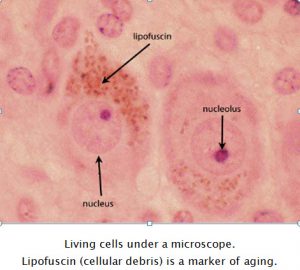
Anti-Aging Science Thrown Into The Dust Bin Except For Those Who Were Wise Enough To Proceed Anyway
by
Bill Sardi

Can’t afford longevity
With all of the progress made in the past decade and a half in the biology of aging to achieve longevity, demographic and economic factors have scuttled any idea of putting these scientific advances into practice. Simply put, America can’t afford to take care of a burgeoning population of retirees. Yet, ironically, modern medicine shuns anti-aging pills that would reduce the burden of age-related disease that would spare society the need for all the doctoring and medicines it can’t afford.
Medicare and Social Security trust funds are depleted. Monies put into those trust funds in past years were spent. Otherwise, inflation would have severely eroded them. All that is left in these trust funds now are IOUs (U.S. Treasury Notes).
In 2019 the federal government collected ~$3.5 trillion in individual income and corporate taxes and spent ~$4.4 trillion. — $1 trillion for Social Security and $651billion for Medicare. (Source: St. Louis Federal Reserve Bank) The COVID-19 crisis will drastically reduce income tax revenues in 2020. Economist John Williams says when Generally Accepted Accounting Practices (GAAP accounting) is applied, the U.S. is spending $6+ trillion, printing Monopoly money to make up the difference between revenues and spending.
Any politician who lobbies for “Medicare For All” is blowing smoke. Medicare is largely funded by private insurance that pays higher rates for hospital care to reduce the burden on Medicare. Private insurance payments average 144.8% of cost while payments from Medicare/Medicaid are 86.6%-88.1% of cost.
Enrollment in Medicare is currently ~44 million beneficiaries and expected to rise to 79 million by 2030. This is without an anti-aging pill.
While every two weeks there is an influx of funds from FICA payroll deductions from younger workers, a large part of funding for retirees now comes out of the general budget. The U.S. is printing money over and above what it collects in taxes to pay for these programs. Bottom line, America can’t afford longevity.
Die on time
Knowing that public funding of medical care was going to be a train wreck because of the expansion of life expectancy (adding years to the end of life rather than life expectancy from birth), in recent times politicians have appointed so-called ethical and medical advisors to put the brakes to any idea of living longer.
These “ethicists” attempt to persuade Americans they should not live beyond the years God intended and should “die on time” (that would certainly help life insurance companies) and that citizens don’t make any meaningful contributions to society past age 70.
Those entities in the anti-aging business might as well be selling jelly beans.
However, a “longevity dividend” has been proposed – delay aging and extend the number of healthy and functional years by 7, and Medicare would be spared from insolvency. But life insurance companies need people to die on time, and pharmaceutical companies need diseases to treat. However, the pharmaceutical sector of Wall Street would collapse with the advent of any widely-used and effective anti-aging pill.
So, when it comes to anti-aging pills, it is every man for himself.
The problem with resveratrol is that it works too well
Given that a resveratrol pill addresses a broad number of health conditions, it would be a potential remedy to the prevalent problem of polypharmacy – senior Americans taking too many drugs that only address symptoms, not causes of disease. But the federal government is making Wall Street decisions, not Main Street decisions.
Unproven, but not disproven
Resveratrol pills will forever fall into the class of unproven (though not disproven) remedies. Health agencies will never put their seal of approval on any anti-aging pill. In fact, should a dietary supplement make any claim it has “anti-aging” effects, its promoters face legal consequences.
Protect seniors FROM resveratrol
The legal thrust is to protect seniors to “weed out risky, ineffective and fraudulent anti-aging treatments and products.” Yes, there are shady anti-aging elixirs, but resveratrol pills aren’t among them. There were ~1200 scientific papers published about resveratrol in 2019, most of them theoretical rather than applied science (laboratory rather than human studies).
Harvard sold out
Harvard sold its resveratrol-like pill to a major pharmaceutical company that shelved the product. Big Pharma paid $700 million to closet a resveratrol pill. It was better for Big Pharma to pay $720 million so it could mothball a Sirtuin1 activator than face loss of billions of dollars in drug sales.
The public was told a renowned resveratrol researcher doctored his data, resveratrol pills fell out of favor, and that was that.
The idea of resveratrol replacing aspirin was never to be. Global sales of resveratrol pills were ~370,000 units in 2019, which represents only ~30,000 users on the planet. For comparison, ~2 billion bottles of aspirin were sold worldwide in 2019.
Resveratrol: no buyer’s remorse
Yet a number of longevity seekers have been taking a resveratrol pill since 2004 and have never regretted that decision. For most, they are experiencing a quality and quantity of life beyond that of their forefathers and birthdate peers.
Lost vision has been restored. Heart attacks have been averted by collateral circulation, equivalent to “natural bypass” surgery. Mental faculties have improved rather than slipped into decline.
As time passes, the decision to take a resveratrol pill is an unfolding miracle that is only realized on a day-to-day basis, but largely unreported in the news media and explained away in medical journals (resveratrol couldn’t possibly work because it is “not bioavailable”). NOT not bioavailable!
Harvard doctor opened the door
These long-time longevity seekers initially learned of Dr. David Sinclair’s work at Harvard Medical School when he blew open the biological doorway to longevity with the revelation of epigenetics and hormesis.
Those concepts hold that:
- Genes are not static; they actively adapt to changing environmental conditions (diet, temperature, radiation, starvation, emotions) by producing proteins, what is called epigenetic gene expression, or switching off genes, called epigenetic silencing. Our biological fate is not predetermined by the composition of our forefathers’ genes. Humans can alter their genes, largely by diet or nutraceuticals.
- Exposure to a low-dose biological threat like food deprivation (calorie restriction), mild oxygen deprivation (high-altitude environments), and molecular mimics thereof (e.g. resveratrol in wine) , trigger internal antioxidant enzymes that negate or prevent adverse events like strokes and heart attacks, a phenomenon called hormesis.
Three other important major mechanisms are in play among resveratrol pill users:
- Resveratrol slows the cell renewal cycle and thus aids in the repair of genes.
- Cellular organelles called mitochondria produce cell energy. Only 8% of the hundreds of mitochondria in each living cell are functional by age 80. Resveratrol renews mitochondria.
- Resveratrol serves to inhibit malignancies via anti-growth factors, and by the influx of calcium to kill cancer cells; in fact, like no other drug, resveratrol inhibits cancer at all three stages – initiation, growth and spread (metastasis).
And finally, another revelation: aging can be reversed – – resveratrol works even among the oldest old. In other words, you are never too old to benefit from this small molecule.
Molecular mimics
Molecular mimics are small molecules that can pass through cell walls and enter the nucleus of living cells to influence genetic machinery. For example, the red wine molecule resveratrol (228 Daltons molecular weight) targets the Sirtuin1 survival gene, the primary gene that responds to food deprivation. Therefore, humans have a built-in mechanism to survive short-term famines.
The alternative to calorie restriction
Calorie restriction (food deprivation) serves as the major model for longevity research because it has been shown to double the lifespan and healthspan of laboratory animals. That was first demonstrated by Clive McCay at Cornell University in the 1935.
Instead of depriving oneself of food to live long (Calorie Restriction Society) a molecule that targets Sirtuin1 could theoretically accomplish the same thing.
While resveratrol would be no excuse to overeat, it would be more practical than attempting to get people to go hungry all the time in order to live longer.
Calorie restriction achieved a doubling of lifespan by 40% reduction in calories, i.e. eating about 1 meal a day.
High calorie malnutrition: “shortgevity”
The modern world is dotted with food-deprived and food-abundant populations. But in our modern world of abundance, we find “high-calorie malnutrition.” This explains why poorer people who often eat more affordable but less nutritious processed foods (carbohydrates like bread, rice, pasta, cereal) and sugary foods have far shorter lifespans living in the same city. Filling the stomach to quell hunger is different than nourishment.
There may be missing essential nutrients, in particular thiamin (vitamin B1) that controls the autonomic nervous system, or vitamin B12, which due to a decline in stomach acid with advancing age, is difficult to absorb.
Some people in America are living longer than ever while others live no longer than people living in a third-world country. Diet may explain why many Americans living in the U.S. can expect to live 20-30 years longer than their neighbors living a few miles away.
The life expectancy gap in Washington DC is 27.5 years; New York City 27.4 years. Maybe we call that “shortgevity.”
The Harvard professor still takes resveratrol pills; biological destiny not fixed
Despite the nay-sayers, Professor David Sinclair hasn’t stopped taking resveratrol pills.
Up until Dr. Sinclair educated the public about the Sirtuin1 gene, most people’s understanding of genetics was you inherited favorable genes from your ancestors and you would live long despite your health habits, and a gene mutation could be favorable. (Actually, any gene mutation is deleterious).
But upon further investigation it was realized whole populations of people were living longer and if these people moved to another place, for example, people in Japan moving to Hawaii, they did not live as long or healthy.
The preconceived conclusion was there must be something environmentally (solar radiation, water, temperature, air, diet) that altered their genes.
Minerals, not calories, control genes
Hence, we learned from Sinclair’s studies that the Sirtuin1 survival gene was activated by a limited calorie diet, which upon further investigation by this reporter, turned out to be limited accumulation of minerals (calcium, iron, copper), not calories, that slows aging. This became the over-mineralization theory of aging.
Aging begins when living cells accumulate debris
Aging begins with the cessation of childhood growth, ~age 18. The body’s demand for minerals subsides and mineral accumulate. It is at this time in life that living cells begin to exhibit accumulation of cellular debris called lipofuscin (li-po-fuss-in). The cell-cleansing lysosomes inside cells don’t enzymatically sweep away cellular debris as efficiently as they did during youth. As iron and copper become trapped inside cells, lipofuscin accumulates. Of interest, resveratrol slows the accumulation of lipofuscin.
Living cells under a microscope.
Lipofuscin (cellular debris) is a marker of aging.

Calendar aging but not biological aging occurs during youth. During childhood growth there is an overwhelming demand for iron to produce hemoglobin in bone marrow for new red blood; and for calcium for bone, and copper for connective tissue, as the body expands during the growth years (0-18 years). But once full-growth is achieved, these minerals begin to accumulate, and essentially the rate of human aging is determined by calcification and rusting.
This means genes are not static. Minerals control the genes. Chelate (attach or dispose of) minerals and aging can be reversed.
Since 80+% of iron is in red blood cells. Blood-letting reduces iron load. Young women lose iron in their monthly menstrual flow and control iron until the onset of menopause. By age 40 women have half the iron stored in their body compared to men and one-fourth the amount of calcium and experience a 50% reduction in risk for heart disease, diabetes and cancer compared to men. If women undergo an early hysterectomy, they experience the same rate of disease as males.
Limiting red meat in the diet will reduce iron storage (red meat providing a highly absorbable form of iron). Limiting calcium-rich dairy products will slow calcification and therefore aging. Scandinavian countries, North America and New Zealand that are dairy countries have very high rates of heart disease. Japan has very little grassland to feed steers and cows and therefore has low iron and calcium intake and the longest life expectancy among developed nations.
Molecular synergism
It is no coincidence that resveratrol chelates (key-lates) to copper. Similar molecules like quercetin (wine, apple peel, onion) and fisetin (strawberries) attach to iron and facilitate their disposal. When these molecules are combined they work synergistically rather than additively. Low-dose resveratrol is superior to mega-dose resveratrol.
Dose makes the poison
Excessive resveratrol can induce anxiety, skin rash, Achilles heel tendonitis and flu-like symptoms. Low-dose resveratrol (100-350 mg resveratrol or total polyphenols like quercetin and fisetin) produce hormesis. Low-dose resveratrol mimics calorie restriction. Low-dose resveratrol stabilizes human chromosomes (bundles of DNA) while high-dose resveratrol produces chromosomal instability.
Of interest, resveratrol in a matrix of other molecules does not become toxic when given in ultra-high doses and therefore is the safest to use.
================
About the author: Bill Sardi is managing partner of Resveratrol Partners LLC, dba LONGEVINEX®, a Las-Vegas-based dietary supplement company.
Resveratrol Partners LLC
4425 S. Jones Blvd., Suite 1
Las Vegas, NV 89103
866.405.4000
Reprinted here with permission.
Leave a Reply